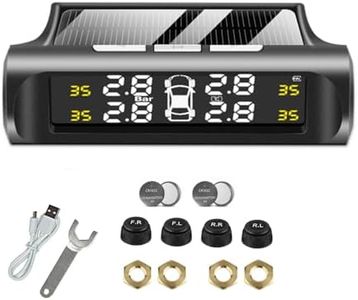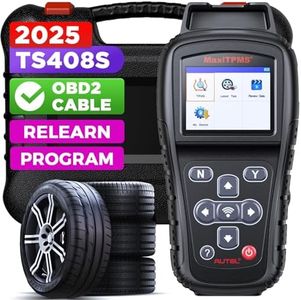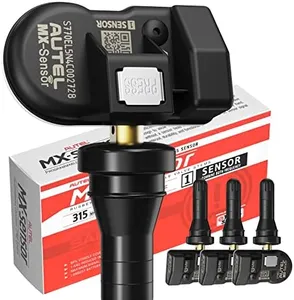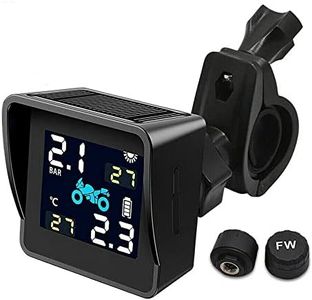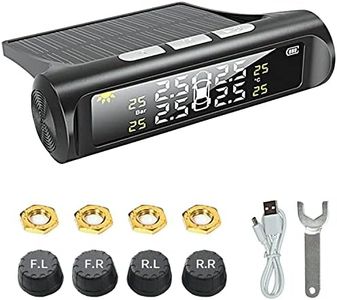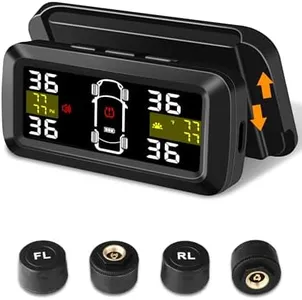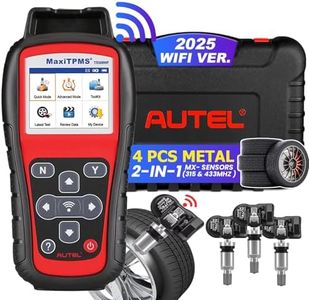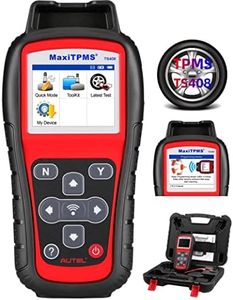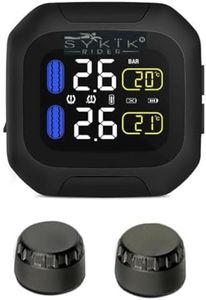We Use CookiesWe use cookies to enhance the security, performance,
functionality and for analytical and promotional activities. By continuing to browse this site you
are agreeing to our privacy policy
10 Best Tpms Monitor
From leading brands and best sellers available on the web.Buying Guide for the Best Tpms Monitor
Choosing the right Tire Pressure Monitoring System (TPMS) can make a big difference in your vehicle's safety and tire longevity. Rather than just relying on regular visual checks, a TPMS keeps you informed about the pressure in your tires at all times, helping you avoid blowouts, improve fuel economy, and extend tire life. To select the best TPMS for your needs, it's important to understand the main features and specifications that distinguish different systems. Knowing how each of these aspects matters for your daily driving and vehicle type will make your choice both easy and effective.Type (Direct vs. Indirect)This spec tells you how the TPMS senses tire pressure. Direct systems use sensors on each tire's valve to measure pressure, giving real-time and accurate readings. Indirect systems estimate pressure changes by tracking wheel speed through the car's ABS sensors. Direct TPMS is more precise and provides actual pressure values, while indirect is simpler but less exact. If you want detailed, instant feedback—maybe for long trips or carrying heavy loads—direct is best. If you care more about simplicity and low maintenance, indirect might be sufficient for basic alerts.
Monitor DisplayThe monitor display is the main way you'll interact with your TPMS. Some displays are built into the vehicle's dashboard, while aftermarket systems often use standalone screens or even connect to your smartphone via Bluetooth. A clear and readable display helps you spot warnings easily. Basic displays use simple lights or icons, while advanced ones show exact pressures for each tire. If you value simplicity, a basic alert is fine. For more control and information, look for systems that show detailed numbers for each tire.
Sensor Battery LifeTPMS sensors use batteries to transmit data. Battery life can range from a couple of years up to ten years, depending on type and usage. Some systems have replaceable batteries, while others require changing the whole sensor. Longer battery life means less hassle with maintenance, especially if you don't want to deal with frequent replacements. If convenience and longevity are important, aim for systems that last longer or have easy battery replacement options. Frequent drivers or those using TPMS on multiple vehicles might prioritize this spec more.
Number of Monitored TiresMost TPMS kits are designed for four tires, but some can handle more—handy for vehicles with dual rear wheels, trailers, or spare tires. Make sure the system covers all the tires you want to monitor, especially if you drive an RV, truck, or vehicle with additional axles. Pick a system based on the kind of vehicle you have and whether you want to keep tabs on additional tires.
Installation MethodThere are two typical installation methods: external (valve-cap style) and internal (inside the tire). External sensors screw onto the tire valve stem, making them very easy to install and remove, but sometimes they’re more vulnerable to theft or damage. Internal sensors, placed inside the tire, are protected but require professional installation. If you want something you can set up yourself, go with external sensors. For a cleaner look and more durability, consider internal sensors, especially if you don’t mind an initial trip to a tire shop.
Alert Types and CustomizationTPMS systems alert you in several ways: visual lights, audible alarms, or even phone notifications. Some systems let you customize alert thresholds for high or low pressure, which is useful if you often adjust pressures for specific driving (like off-roading or towing). If you want to ensure you catch issues in noisy environments or have specific preferences, look for systems with adjustable alerts and multiple notification methods.



